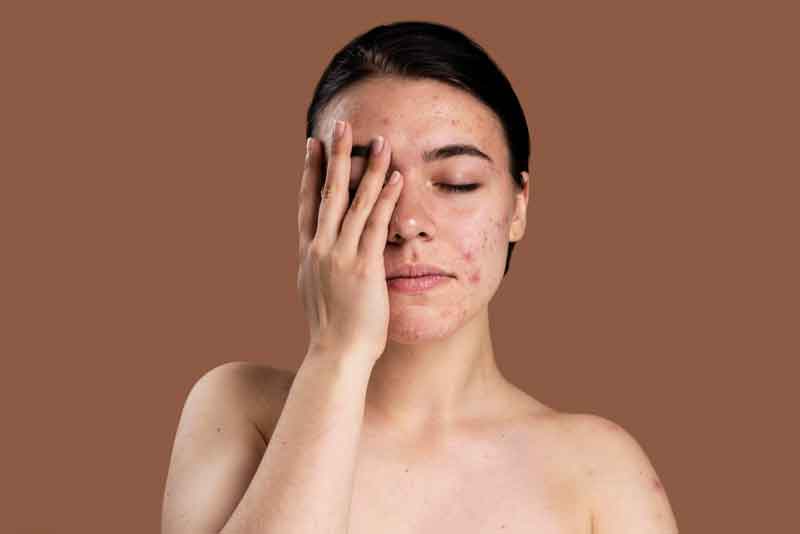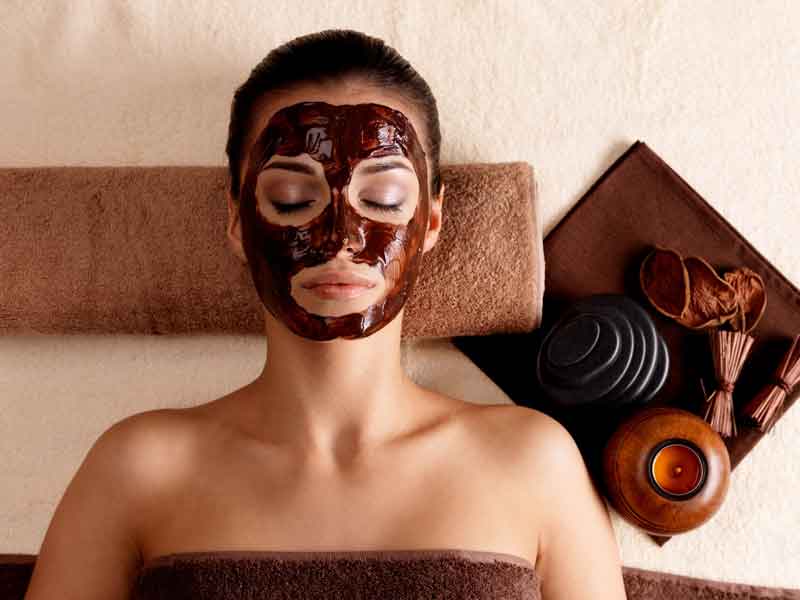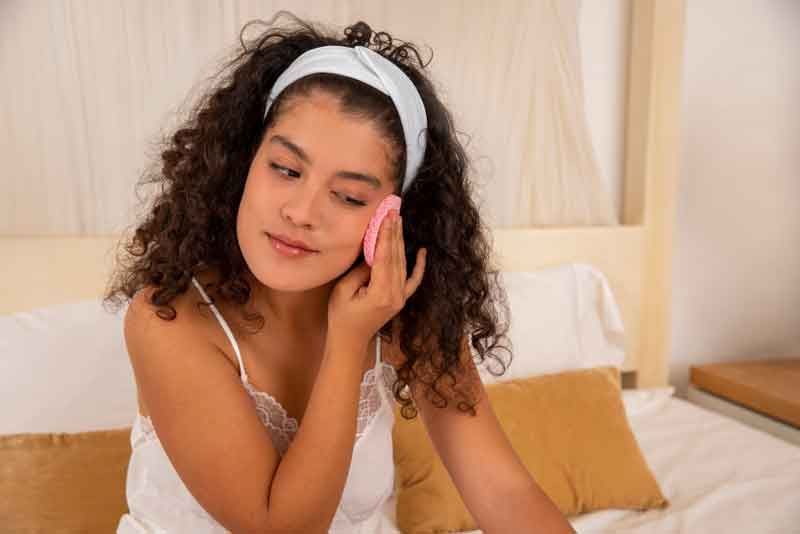Table of Contents
Introduction
Dealing with oily skin can be frustrating, but achieving clear and healthy skin is possible with the right skincare routine. If you have oily skin, you may have experienced a shiny appearance, enlarged pores, and a tendency to develop acne and breakouts. In this article, we will explore the key steps and strategies of an effective clear skin routine specifically designed for oily skin. By following these guidelines, you can take control of your skin’s oil production and achieve a radiant complexion.
Clear Skin Routine for Oily Skin: Dealing with oily skin can be frustrating, but achieving a clear and healthy complexion is within reach with the right skincare routine. If you have oily skin, you may be familiar with the challenges of excess sebum production, a shiny appearance, and a predisposition to acne and breakouts. In this article, we will delve into the essential steps and techniques of a tailored clear skin routine designed specifically for oily skin. By following these effective strategies, you can take control of your skin’s oiliness and embark on a journey toward a radiant and blemish-free complexion.
Understanding Oily Skin

Oily skin is a common skin type characterized by the overproduction of sebum, a natural oil produced by the sebaceous glands in the skin. This excess oil can lead to a shiny appearance, enlarged pores, and a predisposition to acne and breakouts. Understanding the causes and characteristics of oily skin is crucial in developing an effective clear skin routine.
Causes of Oily Skin
The primary cause of oily skin is the overactive sebaceous glands, which produce more sebum than necessary. Several factors contribute to the overproduction of sebum:
- Genetics: Oily skin can be inherited. If your parents have oily skin, there is a higher likelihood that you will also have this skin type.
- Hormonal Influences: Hormonal changes, particularly during puberty, menstruation, or pregnancy, can increase sebum production. Androgens, the male hormones present in both males and females, play a role in stimulating sebum production.
- Environmental Factors: Humidity, heat, and excessive sweating can trigger the skin to produce more oil. Additionally, using harsh or drying skincare products can disrupt the skin’s natural balance, leading to rebound oil production.
Characteristics of Oily Skin
Recognizing the characteristics of oily skin can help you identify and address specific concerns:
- Shiny Appearance: Oily skin has a shiny or greasy sheen, especially in the T-zone (forehead, nose, and chin). This is a result of the excess oil sitting on the skin’s surface.
- Enlarged Pores: Oily skin is often associated with visibly enlarged pores. The excess oil can accumulate in the pores, making them more prominent and prone to clogging.
- Acne and Breakouts: Oily skin is more susceptible to acne and breakouts. The excess sebum can mix with dead skin cells and bacteria, clogging the pores and leading to the formation of blackheads, whiteheads, and pimples.
- Makeup Slippage: Due to the excess oil on the skin’s surface, makeup tends to have a shorter wear time on oily skin. The oil can cause foundation, concealer, and other products to break down or slide off more easily.
Managing Oily Skin
While oily skin can be challenging to manage, a targeted skincare routine can help keep it under control:
- Cleanse with Care: Proper cleansing is vital for oily skin. Use a gentle, oil-free cleanser that effectively removes excess oil, dirt, and impurities without stripping the skin of its natural moisture. Look for ingredients like salicylic acid or tea tree oil, known for their oil-controlling and antibacterial properties.
- Don’t Skip Moisturizer: Contrary to popular belief, moisturizing is essential for oily skin. Opt for lightweight, oil-free moisturizers that provide hydration without adding excess oil. Skipping moisturizer can trigger the skin to produce more oil as it tries to compensate for the lack of hydration.
- Choose Oil-Free and Non-Comedogenic Products: When selecting skincare products, including sunscreen, makeup, and moisturizers, opt for oil-free and non-comedogenic formulas. These products are specifically designed to avoid clogging the pores and exacerbating oiliness or breakouts.
- Use Oil-Absorbing Sheets or Blotting Papers: Throughout the day, you may experience excess oiliness on your skin. Oil-absorbing sheets or blotting papers can help remove the excess oil without disrupting your makeup. Gently press the sheet onto your skin, focusing on the areas that tend to get oily.
- Consider Clay Masks: Clay masks are beneficial for oily skin as they help absorb excess oil and impurities. Look for masks containing ingredients like kaolin clay or bentonite clay, which can help mattify the skin and reduce shine. Use clay masks once or twice a week to deep cleanse and refine the appearance of pores.
- Be Mindful of Makeup Choices: When selecting makeup products, opt for oil-free, non-comedogenic, and matte formulas. Avoid heavy or greasy products that can exacerbate oiliness. Additionally, consider using a primer designed for oily skin to create a smooth canvas and prolong makeup wear.
Understanding your skin type and implementing a skincare routine tailored to oily skin can help you manage excess oil production, prevent breakouts, and achieve a clearer complexion. Remember to be consistent with your routine and be patient, as it may take time to see noticeable improvements. If you have severe or persistent skin concerns, consult a dermatologist for personalized advice and recommendations.
Building an Effective Clear Skin Routine

Daily Cleansing
Proper daily cleansing is the foundation of any clear skin routine for oily skin. By using a gentle cleanser, you can effectively remove excess oil, dirt, and impurities without stripping the skin. Opt for cleansers specifically formulated for oily skin and cleanse your face twice a day to maintain a clean and fresh complexion.
Exfoliation
Regular exfoliation is crucial for oily skin to remove dead skin cells and unclog pores. This helps prevent the buildup of sebum and reduces the likelihood of breakouts. Consider using chemical exfoliants containing ingredients like alpha hydroxy acids (AHAs) or beta hydroxy acids (BHAs) to gently exfoliate the skin. Aim to exfoliate 1-2 times per week, adjusting the frequency based on your skin’s tolerance.
Toning and Balancing
Using a toner helps balance the skin’s pH levels and tighten pores. Look for toners specifically formulated for oily skin that contains ingredients like witch hazel, tea tree oil, or salicylic acid. These ingredients help control excess oil production and refine the skin’s texture, leaving it fresh and revitalized.
Moisturizing
Contrary to popular belief, even oily skin needs moisturization. Skipping moisturizer can actually worsen oil production as the skin tries to compensate for the lack of hydration. Opt for lightweight, oil-free moisturizers that provide hydration without clogging the pores. These moisturizers can help balance oil production and keep the skin nourished and supple.
Targeted Treatments for Oily Skin

Acne-Fighting Ingredients
Incorporating acne-fighting ingredients into your routine can help keep breakouts at bay. Ingredients like benzoyl peroxide, salicylic acid, or tea tree oil are effective in reducing inflammation, unclogging pores, and combating acne-causing bacteria. Use these ingredients in targeted treatments, such as cleansers, serums, or spot treatments, to address specific concerns.
Clay Masks and Oil Absorbing Products
Clay masks and oil-absorbing products are beneficial for controlling excess oil and mattifying the skin. Clay masks work by absorbing oil and impurities from the skin’s surface, helping to refine pores and reduce shine. Look for oil-absorbing products such as blotting papers or mattifying powders that can be used throughout the day to combat oiliness and maintain a fresh appearance.
Spot Treatments
Spot treatments are a great addition to your routine to target individual blemishes and speed up healing. Look for spot treatments containing ingredients like sulfur or benzoyl peroxide. Apply these treatments directly to the affected areas to reduce inflammation and promote faster recovery.
Lifestyle and Diet Tips for Oily Skin

Healthy Diet Choices
Maintaining a healthy diet can contribute to clearer skin, even for those with oily skin. Incorporate foods rich in antioxidants, such as fruits and vegetables, as well as omega-3 fatty acids found in fish, walnuts, and flaxseeds. These nutrients help promote overall skin health and reduce inflammation.
Hydration and Water Intake
Staying hydrated is vital for all skin types, including oily skin. Proper hydration helps regulate oil production and flushes out toxins from the body. Aim to drink an adequate amount of water throughout the day and incorporate hydrating foods such as cucumbers and watermelon into your diet.
Stress Management and Skincare Habits
Managing stress and establishing healthy skincare habits can help improve the condition of oily skin. Stress can trigger an increase in oil production, leading to breakouts. Practice stress-reducing activities like meditation or yoga. Additionally, maintain consistent skincare routines, avoiding harsh products or excessive touching of the face, which can further irritate the skin.
Conclusion
Achieving clear and healthy skin for those with oily skin requires a tailored skincare routine and small lifestyle adjustments. By following the steps outlined in this article, you can effectively manage oily skin, control excess oil production, and prevent breakouts. Remember to cleanse, exfoliate, tone, moisturize, and incorporate targeted treatments for acne-prone skin. Additionally, prioritize a healthy diet, stay hydrated, manage stress, and establish consistent skincare habits. With dedication and the right approach, you can achieve a radiant complexion.
FAQs
Q: Should I avoid moisturizing if I have oily skin?
A: No, moisturizing is essential for oily skin too. Choose lightweight, oil-free moisturizers that provide hydration without clogging the pores. Skipping moisturizer can worsen oil production as the skin tries to compensate for the lack of hydration.
Q: How often should I exfoliate oily skin?
A: Aim to exfoliate oily skin 1-2 times per week. However, the frequency may vary depending on your skin’s tolerance. Monitor your skin’s response and adjust accordingly to avoid over-exfoliation, which can lead to irritation.
Q: Can oily skin benefit from clay masks?
A: Yes, clay masks are beneficial for oily skin. They work by absorbing excess oil and impurities from the skin’s surface, helping to refine pores and reduce shine. Incorporating clay masks into your skincare routine can help control oiliness and promote a clearer complexion.
Q: What are some stress-reducing activities for managing oily skin?
A: Engaging in activities like meditation, yoga, or deep breathing exercises can help reduce stress levels, which in turn can positively impact oily skin. Practicing stress management techniques can help regulate oil production and minimize breakouts.
Q: Can a healthy diet impact oily skin?
A: Yes, maintaining a healthy diet can contribute to clearer skin, including oily skin. Incorporate foods rich in antioxidants, such as fruits and vegetables, as well as omega-3 fatty acids found in fish, walnuts, and flaxseeds. These nutrients help promote overall skin health and reduce inflammation.
Remember to consult a dermatologist for personalized advice and recommendations based on your specific skin concerns and needs.




2 Comments